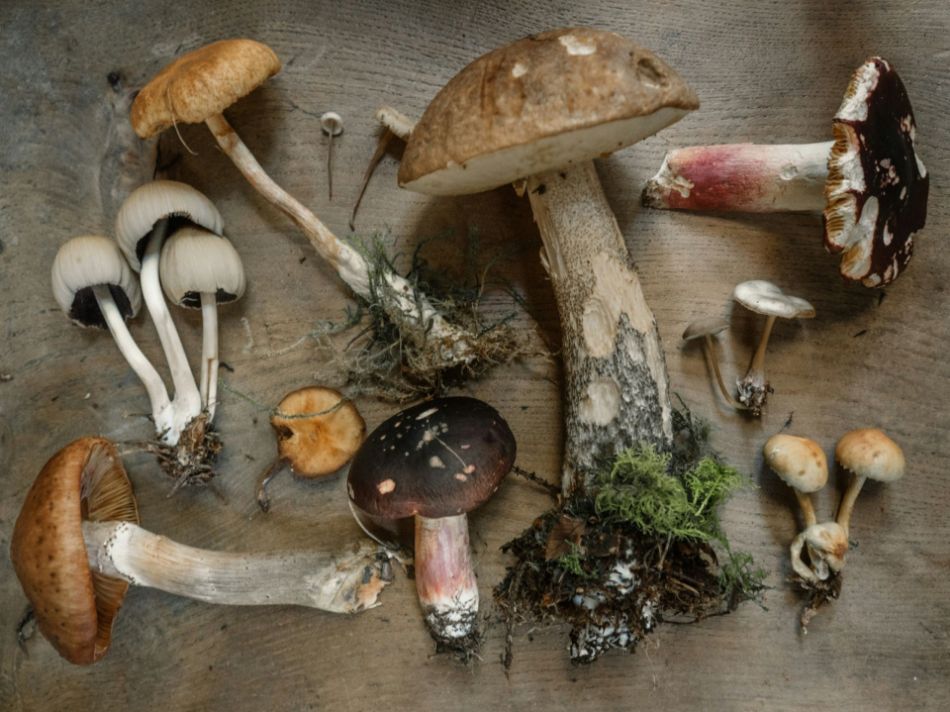Mushrooms represent a unique and distinctive biological kingdom, positioned between plants and animals. Scientifically classified in the kingdom Fungi, these organisms have extremely particular morphological and reproductive characteristics that differentiate them from all other forms of life.
Anatomy and morphological structure
The mushroom is characterized by a morphological structure different from plants and trees, so let's see together what parts characterize it...
External structure
A mushroom is mainly composed of:
- Cap (Pileus): the upper and most visible part, which serves protective and reproductive functions
- Stem (Stipe): the supporting structure that holds up the cap
- Ring (Annulus): residual membrane of the veil that initially covers the gills
Internal structure
The mycelium represents the vegetative apparatus of the mushroom, formed by microscopic filaments called hyphae. These thin elements:
- Develop in the substrate
- Absorb nutrients
- Allow the growth and reproduction of the mushroom
Reproductive mechanisms
Mushrooms possess extremely complex reproductive modes that are articulated in:
Sexual reproduction
- Fusion of gametes
- Genetic exchange
- Production of spores with high genetic variability
Asexual reproduction
- Fragmentation of the mycelium
- Production of spores identical to the original mushroom
- Rapid propagation mechanism
Habitat and distribution
Natural Environments
Mushrooms thrive in multiple ecosystems, including:
- Temperate and tropical forests
- Wet and wooded areas
- Soils rich in organic matter
- Underground environments
Ecological role
They perform crucial functions in the ecosystem:
- Decomposition of organic material
- Symbiosis with plant roots
- Regulation of soil nutrient cycles
Curiosities
Thanks to their particular characteristics, mushrooms are not only a food with excellent properties, but their use can span various fields
Nutritional classification
Mushrooms are distinguished by:
- High protein content
- Low caloric intake
- Richness in vitamins and minerals
Multidisciplinary uses
They find application in:
- Food industry
- Medicine
- Pharmaceutical industry
- Scientific research
- New technologies
The mushroom: a continuous surprise.
Mushrooms represent extraordinarily complex organisms that continue to surprise the scientific community with their adaptability and survival capabilities.
Their structure, reproductive modes, and ecological role make them essential for the balance of our planet.
The fungal kingdom is a universe in continuous evolution, with new scientific discoveries emerging every year about their extraordinary benefits for gut health and overall well-being. From now on, when you see a mushroom, you will no longer think only of its taste or appearance, but of all the therapeutic potential it holds in its fibers and bioactive compounds. ✉️ Stay connected - Subscribe to our newsletter to receive the latest studies on: Nature offers us extraordinary tools to take care of our health. Fungi, with their unique balance between nutrition and medicine, represent a fascinating frontier we are only beginning to explore. Continue to follow us to discover how these extraordinary organisms can transform your approach to well-being.Continue your journey into the world of fungi










